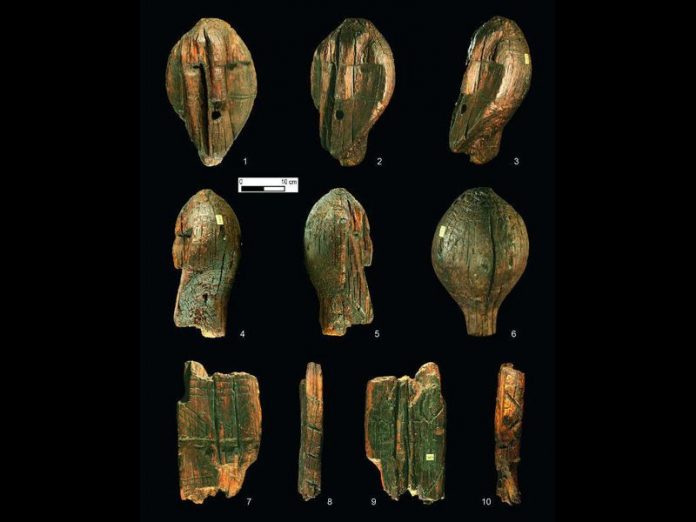The Shigir Idol was discovered by gold prospectors in 1894, but dating it proved a little problematic and controversial. Now, it is believed to be one of the oldest samples of art at 11,600 years old.
Early analysis showed that it was made entirely of larch wood and was constructed from several chunks. It remained preserved for thousands of years because of antimicrobial properties found in the peat. The idol was also covered extensively with markings, some of which depicted tiny human faces. To this day, no one knows what most of the markings depict. It was also noted that some of the original pieces of the idol had been lost—it is believed that it originally stood approximately five meters tall. In 1997, a team in Russia used radiocarbon dating to estimate the age of the icon and found it to be approximately 9,500 years old.
Experts have studied the carvings on the idol over the years, and many have suggested they likely represent a form of art, possibly linked with spiritual or religious activities.
Recently, the team in Germany expressed interest it taking a closer look at the idol, which is normally housed in the Sverdlovsk Regional Museum, in Russia. Arrangements were made for the idol to be shipped to Germany, where it was studied, along with other original material found in the peat bog. Using accelerator mass spectrometry, the team found the true age of the idol to be approximately 11,500 years old, placing its creation at around the time of the end of the Ice Age. That age also makes it the oldest known wood monumental sculpture ever found and more than twice the age of the Egyptian pyramids. The researchers report that they also found another face carved into the wood, bringing the total to eight. Their findings suggest that researchers looking to better understand very early human behavior perhaps need to widen their search beyond the Fertile Crescent.





























